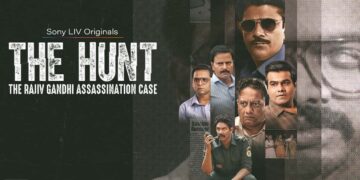CUDDALORE, INDIA — A tragic train accident on July 8, 2025, at Semmankuppam in Tamil Nadu’s Cuddalore district claimed the lives of three schoolchildren and left two others, including the van driver, seriously injured. The incident, involving a collision between a school van and the Villupuram-Mayiladuthurai Express, has sparked outrage and exposed critical safety lapses at a manned railway crossing. Initially, Southern Railway pinned the blame on the van driver, alleging he insisted on crossing despite warnings. However, investigations have revealed that gatekeeper Pankaj Sharma admitted to leaving the railway gate open, prompting questions about why the railway authorities deflected responsibility.
A Tragic Collision
The accident occurred around 7:45 a.m. when a school van from Krishnaswamy School, carrying five students, attempted to cross the LC-170 railway gate at Semmankuppam. The Villupuram-Mayiladuthurai Express, traveling at 95 kmph, struck the van, dragging it nearly 50 meters. Three students, identified as Charumathi (Class 11), Nimalesh (Class 6), and another unnamed child, were killed. The surviving student, V. Viswesh, and the van driver, Shankar, sustained severe injuries and are receiving treatment at Cuddalore Government Hospital.
Preliminary investigations by the railways and police, coupled with eyewitness accounts, confirmed that the gate was open at the time of the collision. A recorded conversation revealed that Sharma falsely informed the Alapakkam Station Master that the gate was closed, providing a private number to indicate clearance. After the accident, Sharma admitted to his negligence in a follow-up call, a conversation captured on an auto voice recorder.
Southern Railway’s Initial Claims
In the immediate aftermath, Southern Railway issued a statement claiming that the van driver insisted on crossing the tracks despite the gatekeeper’s attempt to close the gate, a move they described as a violation of protocol. This narrative was quickly challenged by the injured driver and surviving student, who insisted the gate was open and unattended. Viswesh, in a statement to Times of India, recounted, “The gate was open, there was no signal. We didn’t hear the train’s horn. The gatekeeper didn’t even come out after the crash.” Shankar, the driver, echoed this, denying any interaction with the gatekeeper.
Local residents and eyewitnesses further corroborated these accounts, alleging that Sharma was either asleep or under the influence, with some reports suggesting he was not at his post. An irate crowd reportedly attacked Sharma after the incident, reflecting public anger over the apparent negligence.
Investigations Uncover Gatekeeper’s Negligence
A departmental inquiry ordered by Southern Railway, alongside a police investigation, exposed critical evidence. The gatekeeper’s failure to close the LC-170 gate was confirmed, with Sharma admitting his lapse in a recorded call. Sources told The Hindu that Sharma had also allowed the Tiruchendur-Chennai Express to pass through the same open gate earlier that morning, indicating a pattern of negligence.
The National Human Rights Commission (NHRC) took suo motu cognizance of the incident on July 17, issuing notices to the Railway Board, the Tamil Nadu government, and the state’s Director-General of Police, demanding a detailed report. The NHRC highlighted that the gate was open during the collision, underscoring a serious safety lapse.
Despite this evidence, Southern Railway’s initial attempt to blame the van driver has drawn scrutiny. S. Vijay Kumar, an associate editor at The Hindu with extensive experience covering railways, expressed surprise at the railway’s narrative, noting that strict protocols govern level crossings. “Before a train is cleared, the station master gives a code to the gatekeeper, who must close the gate and return a private number. This process failed,” Kumar explained.
Systemic Failures and Blame-Shifting
The Cuddalore accident has exposed broader systemic issues. The LC-170 gate was a non-interlocked crossing, meaning it lacked automated safety mechanisms to prevent trains from passing when the gate is open. Railway unions have long flagged the pressure gatekeepers face from impatient motorists, but the absence of interlocking systems remains a critical gap.
Southern Railway also pointed fingers at the Cuddalore district administration, claiming a proposed railway-funded underpass had been stalled for over a year due to bureaucratic delays. The Tamil Nadu government countered, questioning the railway’s safety enforcement and protocol adherence. This blame-shifting has fueled public outrage, with locals and activists demanding accountability.
The incident prompted Southern Railway to suspend Sharma, initiate his dismissal, and appoint a new gatekeeper, Anandaraj, a Tamil Nadu native, following local demands for a Tamil-speaking official. A 15-day safety drive was launched, leading to the suspension of two additional gatekeepers for sleeping on duty in the Arakkonam-Chengalpattu section.
Public Outcry and Calls for Reform
The tragedy has sparked widespread grief and condemnation. Tamil actor Kamal Haasan called the loss of young lives “utterly unforgivable,” urging the government and railways to take immediate action to prevent future accidents. On X, posts reflected public anger, with users like vijaythehindu and HereWorks highlighting Sharma’s admission and criticizing Southern Railway’s initial claims.
The state government announced compensation of ₹5 lakh per family, while the railways pledged ₹8 lakh under a no-fault liability scheme. However, as Times of India noted, “No sum can be adequate” for the loss of young lives. The Commissioner of Railway Safety will conduct an independent inquiry, and a three-member team led by Divisional Safety Officer Mahesh Kumar is investigating, with notices issued to 13 individuals, including railway staff and the van driver.
A Call for Accountability
The Cuddalore train accident underscores the urgent need for systemic reforms, including the conversion of non-interlocked crossings to interlocked ones and the expedited construction of overpasses or underpasses. With thousands of railway crossings across India lacking modern safety systems, the tragedy serves as a stark reminder of the human cost of negligence and institutional delays. As investigations continue, the focus remains on ensuring justice for the victims and implementing measures to prevent such preventable tragedies.
For more information on railway safety, contact local authorities or visit the Indian Railways website.







































